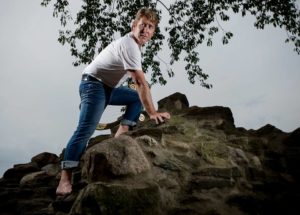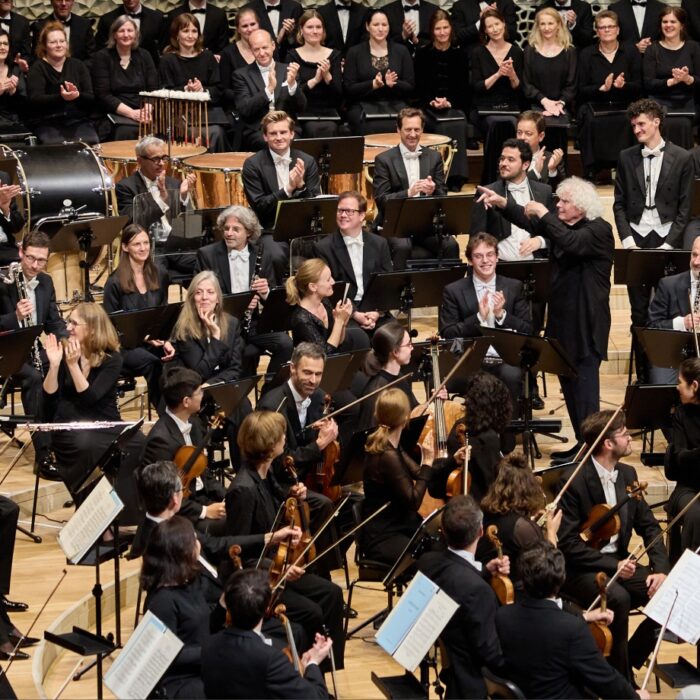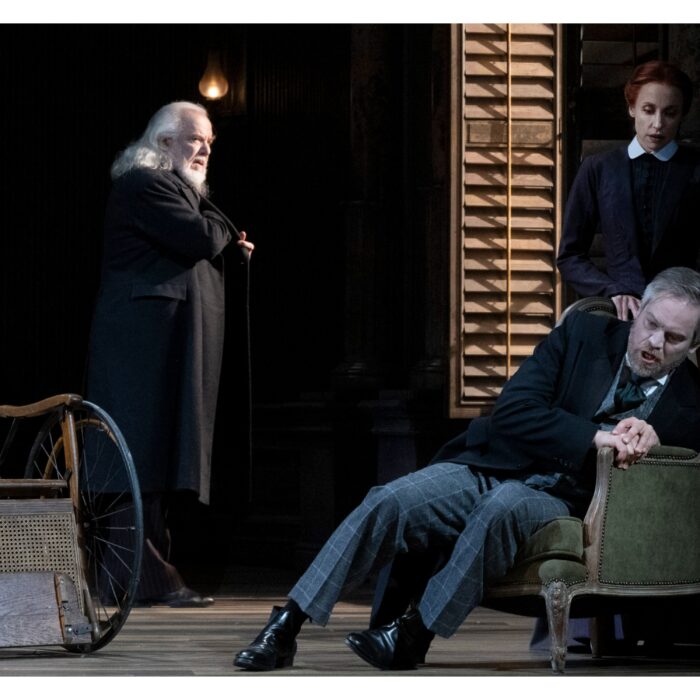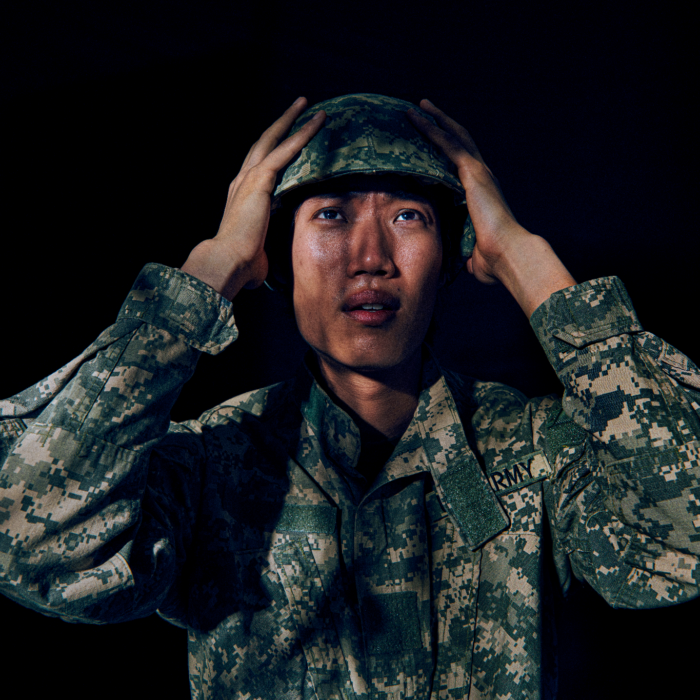
The Chautauqua Opera Company 2017 Review – L’Orfeo: Respighi’s Orchestration of the Monteverdi Masterwork Asserts the Power of Music
By John S. Twinam“L’Orfeo” debuted in 1607, as Capt. John Smith sailed across the Atlantic to found a settlement in Jamestown, Virginia. It is the oldest opera in the repertoire. So for it to have an American premiere of any sort in 2017 is remarkable. But on Saturday, July 8th, 2017, the Respighi orchestration of Monteverdi’s version of the tale of Orpheus and Eurydice had its American stage debut outside Jamestown, New York, at the Chautauqua Amphitheater, itself the (controversial) subject of a complete “re-orchestration” that debuted just two weeks prior.
New Orchestral Colors With Appropriate Balance
The Chautauqua Symphony Orchestra, led by conductor Steven Osgood, provided a lush, romantic interpretation of the Renaissance/Baroque classic that enhanced but never overwhelmed the spirit of the original. When Orfeo (versatile baritone Daniel Belcher) marshaled all the emotional power of music in his plea to enter Hades, he had much more at his disposal than the traditional strings, brass, and continuo of the 17th century. As Belcher pointed out in an exclusive interview with Operawire, the richer orchestration not only challenged the singers with more and louder instruments to be heard above but, since the music is fully metered, also deprived them of the flexibility of the recitative style. What he might have done in ninety seconds in one of his earlier productions of this opera might take five minutes with the Respighi orchestration. Being heard through this thicker orchestration in an open-air amphitheater was the least of Belcher’s accomplishments on a triumphant evening that was indeed proof of the awesome power of music, just as Monteverdi intended over 400 years ago.
The opera opens with a Toccata, the trumpets sounding a clarion call, but in this version, the entire orchestra quickly joins in. It serves as an overture of sorts, getting the audience settled in their seats before the Prologue. Mezzo-soprano Heather Johnson, who also sings Hope and the Messenger, floated onto the stage as Music and immediately demonstrated the power she has to sway emotions. Ninety years before “The Mourning Bride” introduced the aphorism, “Music has power to calm the savage breast,” Monteverdi proclaimed music had the power “to soothe each troubled heart and to inflame the coldest minds.” Indeed, in this drama music must overcome hell itself, as Orfeo pursues his love even into Hades.
A Winning Lead
But first he must win her. Orfeo had at first been spurned by his love. The chorus of Chautauqua Opera Young Artists laments his melancholy. But he has won Euridice (Chelsea Friedlander) over, and Act I celebrates their nuptials, offering Belcher the first of many opportunities to display his fine technique, with accurate pitch and precise control. With diction as crisp as his melodic line, he won the audience over as surely as Orfeo had won his bride. The Pastori (Eric Wassenaar, Omar Najimi, Ntalie Rose Havens, and Tascha Anderson) and Ninfa (Helen Hassinger) ably augmented the chorus’ narration of the proceedings, as emotions caromed from melancholy to joy to despair by the end of Act II.
Firm Direction
Directed and choreographed by Keturah Stickann, the production has been set in rural America at roughly the time Respighi wrote his orchestration to maintain a historical, nostalgic feel. According to Belcher, the director’s vision for the production grew in part out of a desire to not only utilize the unique space the Chautauqua Amphitheater provides, but also the Chautauqua experience itself in terms of creating a genuine community. The challenges in updating this piece are clear: references to Antiquity, such as the Furies, not to mention the appearances of gods like Apollo (Arnold Livingston Geis) and Pluto (Evan Ross). Establishing the religious fundamentalism of the region through a snake-handling scene early on, which at first to me seemed like cheap stereotyping, but ultimately served to establish the community’s belief in very real angels and demons and Hell and helped make the update work for me.
The costumes and set, at least at stage level, had a “Grapes of Wrath” kind of feel: lots of overalls, patchwork quilts, and wash bins. Lil’ Orfeo, if you will. But center stage was a broad ladder that allowed characters to ascend to another level, taking advantage of the Amp’s choir loft behind the stage. On the left, Euridice’s death in Act II is played out there rather than occur offstage, as is customary. Orfeo’s grieving over her body required every bit of Belcher’s energy until the very end of the act; my worry that he was being overextended, given the big sings still to come, was fortunately for naught. On the right was a sort of divine den, dominated by a lute and a highboy, to which Music and Hope retreated when their parts had been played. Both parts, as well as the Messenger, who delivers the dreadful news of Euridice’s death, were sung to perfection by Heather Johnson, whose rich, warm, mezzo effortlessly filled the open-air Amp with the pure tones Monteverdi must have had in mind.
At the end of the second act, the large quilt that had dominated upstage left was ripped down, and its red replacement signified our descent into Hades for Acts III and IV. The center stage ladder became Orfeo’s path to the underworld, challenged by a magnificently menacing Ricardo Ceballos de la Mora as Caronte, the ferryman, who blocks Belcher’s descent with his oar, refusing him admission to the Underworld. Without the advantage of bizarre costuming or makeup, Caronte’s foreboding, forbidding, presence was established only by the resonance and colors of de la Mora’s virile bass. Defiant to the end (he falls asleep – the drama runs into a little trouble here), the confrontation between Belcher, who spends most of the act (not to mention all of “Possente spirto,” the opera’s turning point and most fearsome vocal challenge), clinging to the ladder 10 feet above the stage, was for me the high point of the evening, dramatically and vocally. With only two opportunities to rehearse with the actual set piece ladder at the actual height, Belcher’s accomplishment in rendering such a gorgeous entreaty, complete with the only baroque ornamentation of the evening (“my homage to the original,” said Belcher) while so precariously perched is miraculous. Having made his way into Hades, and assisted by the luminous Megan Grey’s Proserpina, Orfeo began his ascent to the surface only to famously lose his beloved forever with a backward glance. Or at least until Act V, when stripping off his mortal coil (well, down to his boxers – this is Chautauqua, after all) he ascended with Apollo into the skies to admire Euridice’s constellation of stars. While the symbolism of shedding his clothes was certainly appropriate to the context, I am beginning to wonder if I will ever see another opera where the male lead neither puts on nor removes his trousers.
Experiencing opera in the new Amp was for me largely an improvement. The treacherously steep ramps have been replaced with terraced steps. The “side titles” are more discreet, as is the orchestra, which has been sunk into a pit large enough to accommodate the largest symphonies. Playing I believe for the first time in the new facility, the Chautauqua Symphony Orchestra balanced the singers beautifully. I was astounded to hear that there were complaints from some in the audience that the singers could not be heard above the orchestra as that was not my experience at all, not even with the most junior of the supporting players. I heard every word, every note from both singers and orchestra. I’ll just say that I was seated in what would be considered the Amp’s balcony, while the complaints came from those seated below me.


